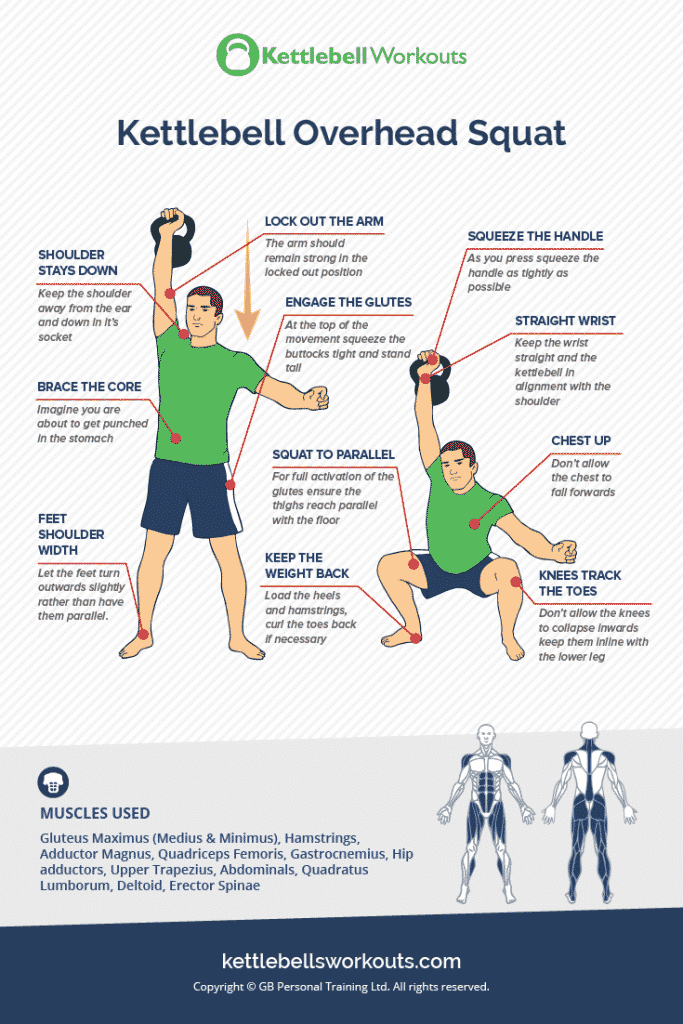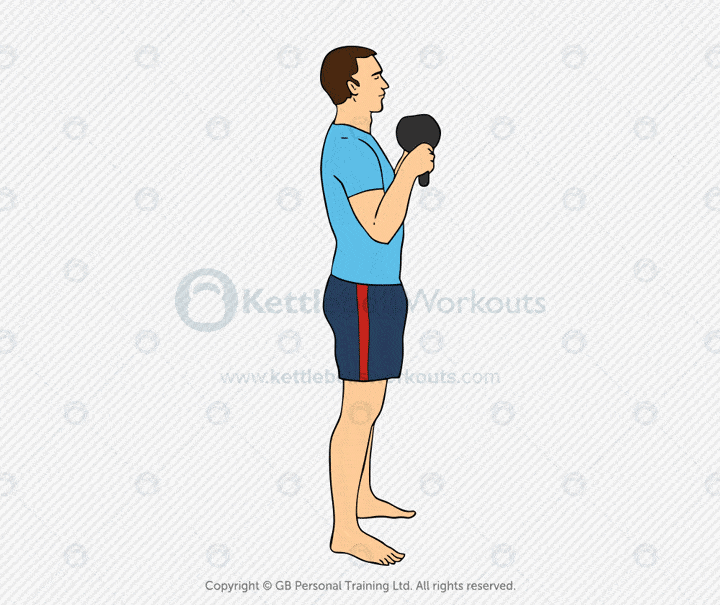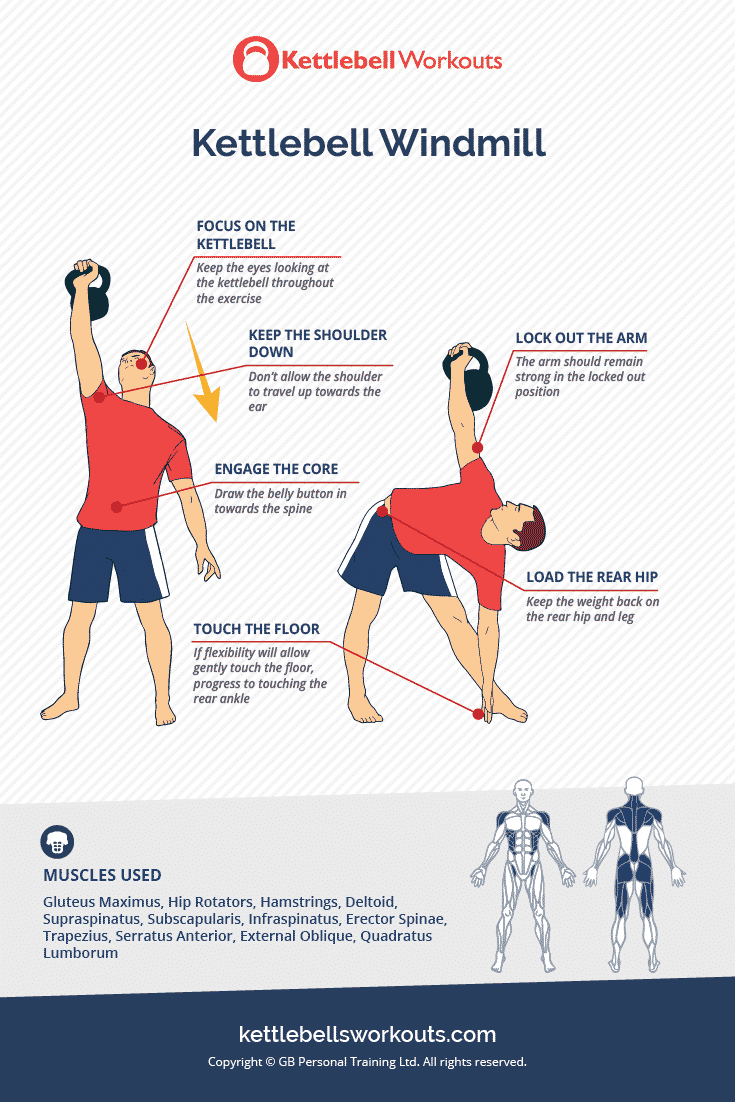Last Updated on 29 July 2025 by Greg Brookes

The kettlebell overhead squat is a challenging and rewarding exercise that tests your mobility, stability, and strength from head to toe.
It demands solid squat mechanics, strong shoulders, and excellent thoracic mobility, making it a fantastic diagnostic and training tool.
What Is the Kettlebell Overhead Squat?
This squat variation involves holding a kettlebell locked out overhead with one arm while performing a full-depth squat.
It’s not just a leg exercise, it’s a full-body integration drill that challenges every link in the chain.

Why the Overhead Squat Matters
Anytime you move with a weight overhead, you increase the demand on:
- The heart (pumping blood upward)
- The thoracic spine (for extension and mobility)
- The shoulder stabilisers (for keeping the kettlebell steady)
- The core (to connect upper and lower body efficiently)
The kettlebell overhead squat forces the body to stabilise vertically, making it a superb tool for improving posture, strength, and joint control.
Muscles Worked in the Overhead Squat
- Quads and glutes
- Hamstrings
- Core and obliques
- Shoulders (especially stabilisers)
- Upper and mid back
How to Do the Kettlebell Overhead Squat (Step-by-Step)
- Clean and press a light kettlebell overhead with one arm.
- Set your feet shoulder-width apart and brace your core.
- Begin the squat by sitting back and down while keeping the kettlebell arm locked out overhead.
- Descend as low as mobility allows while maintaining a vertical torso.
- Push through your heels to stand back up, keeping the kettlebell overhead.
Tip: Watch for rotation. It’s common to twist slightly to allow for overhead alignment. Keep it controlled.
Watch the kettlebell overhead squat, note the control, depth, and shoulder positioning.
Common Mistakes to Avoid
- Letting the kettlebell drift forward
- Rounding the upper back at the bottom
- Collapsing the arch of the foot or knees caving in
- Losing control of the locked-out arm
Warm-Up Drills to Prep for the Overhead Squat
- Shoulder dislocates or band openers (10 reps)
- Wall squats (5 slow reps)
- Bottoms up overhead hold (20 seconds each side)
Progressions and Regressions
Regression: Start with a bodyweight overhead squat using a dowel or towel.
Progression: Use a heavier kettlebell, or perform from a deficit (heels elevated).
Programming Tips and Repetition Goals
- Use 3–5 reps per side. Focus on form, not weight.
- This works best as a warm-up, mobility drill, or part of a strength-mobility combo circuit.
Overhead Squat vs Goblet Squat
- The goblet squat is more accessible and load-focused.
- The overhead squat introduces balance, mobility, and shoulder integrity, making it a progression once your goblet squat is solid.

Related Exercises You Can Try Next
- Kettlebell Goblet Squat
- Kettlebell Bottoms Up Press
- Wall Squat with Reach
Want More Smart Kettlebell Training?
Explore more of my kettlebell tutorials and training guides to build a stronger, more mobile body.
You’ll find detailed breakdowns of essential movements, progression plans, and tips to refine your technique.
Improve mobility and core control with more overhead lifts in my kettlebell exercises guide.
Frequently Asked Questions
It challenges your mobility, balance, and shoulder strength all at once. It reveals weak links quickly.
That’s often due to poor thoracic mobility or limited squat depth. Use warm-up drills to improve.
You can, but it’s better to do all reps on one side first to build stability, then switch.
Include them once or twice per week, especially in mobility or technique-focused sessions.




Comments